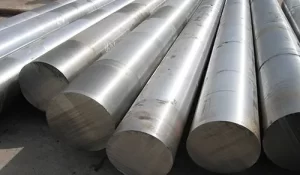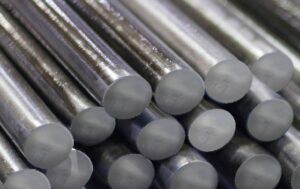Stainless steel, with its exceptional properties, has become a staple material across various industries. Among the many stainless steel alloys, 316 stainless steel round bars are highly sought-after for their versatile applications. In this extensive guide, we will explore the diverse range of common applications that benefit from the use of 316 stainless steel round bars.
Understanding 316 Stainless Steel
Before delving into specific applications, it’s essential to grasp the fundamental characteristics of 316 stainless steel.
Composition and Alloying Elements
316 stainless steel belongs to the austenitic stainless steel family and boasts a well-balanced composition of key elements:
- Chromium (Cr): Provides exceptional corrosion resistance by forming a protective oxide layer.
- Nickel (Ni): Enhances corrosion resistance, particularly in acidic environments.
- Molybdenum (Mo): Improves resistance to pitting corrosion.
- Iron (Fe): The base metal that contributes to its strength and durability.
- Other Trace Elements: Including carbon, silicon, and manganese, influence specific properties.
Corrosion Resistance
One of the standout features of 316 stainless steel is its unparalleled corrosion resistance, making it suitable for use in challenging environments.
High Temperature Performance
316 stainless steel maintains its mechanical properties even at elevated temperatures, rendering it suitable for applications exposed to heat.
Strength and Durability
These round bars are known for their impressive tensile strength and durability, making them ideal for heavy-duty applications.
Common Applications for 316 Stainless Steel Round Bars
Now, let’s explore the industries and scenarios where 316 stainless steel round bars find extensive use due to their unique properties.
1. Marine Industry
Applications:
- Ship fittings
- Marine hardware
- Boat propellers
- Offshore platforms
- Fishing equipment
Reasons for Use:
The marine industry relies heavily on 316 stainless steel due to its exceptional resistance to corrosion in saltwater environments. It ensures the longevity and reliability of critical components and structures in ships and offshore installations.
2. Chemical Processing
Applications:
- Chemical reactors
- Pipelines
- Storage tanks
- Pumps and valves
Reasons for Use:
In the chemical processing industry, where exposure to corrosive chemicals is common, 316 stainless steel is a top choice. Its resistance to acids, alkalis, and chemicals ensures the integrity of equipment and infrastructure.
3. Food and Pharmaceutical Industries
Applications:
- Food processing equipment
- Pharmaceutical machinery
- Biotechnology apparatus
- Sterilization equipment
Reasons for Use:
Hygiene and corrosion resistance are paramount in these industries. 316 stainless steel’s non-reactive nature, ease of cleaning, and durability make it an ideal material for ensuring product quality and safety.
4. Construction and Architecture
Applications:
- Structural components
- Handrails and balustrades
- Architectural features
- Building facades
Reasons for Use:
In construction and architecture, aesthetics and durability are critical. 316 stainless steel’s attractive finish, combined with its strength and resistance to weathering, makes it a preferred choice for modern building designs.
5. Aerospace and Defense
Applications:
- Aircraft components
- Military hardware
- Aerospace fasteners
- Weapon systems
Reasons for Use:
In aerospace and defense applications, where lightweight materials and high-strength alloys are essential, 316 stainless steel is chosen for its combination of strength, corrosion resistance, and heat resistance.
6. Oil and Gas
Applications:
- Oil rigs and platforms
- Pipeline construction
- Wellhead equipment
- Valves and fittings
Reasons for Use:
The oil and gas industry demands materials that can withstand harsh offshore environments. 316 stainless steel’s corrosion resistance and durability make it valuable for ensuring the integrity of equipment.
7. Automotive and Transportation
Applications:
- Exhaust systems
- Fasteners
- Engine components
- Suspension parts
Reasons for Use:
In the automotive sector, 316 stainless steel is utilized for its resistance to heat and corrosion, contributing to the longevity and reliability of various vehicle components.
8. Medical and Healthcare
Applications:
- Surgical instruments
- Medical implants
- Laboratory equipment
- Sterilization trays
Reasons for Use:
In the medical field, 316 stainless steel is favored for its biocompatibility, corrosion resistance, and ease of sterilization, ensuring the safety and performance of medical devices and implants.
9. Renewable Energy
Applications:
- Wind turbine components
- Solar panel mounting systems
- Geothermal equipment
Reasons for Use:
In the renewable energy sector, 316 stainless steel contributes to the reliability and longevity of components used in green energy technologies.
FAQ
Q1: Is 316 stainless steel magnetic?
No, 316 stainless steel is typically non-magnetic in its annealed state. However, it may exhibit slight magnetic properties after cold working or fabrication processes.
Q2: Can 316 stainless steel round bars be welded?
Yes, 316 stainless steel can be welded using standard welding techniques. It’s important to use low-carbon filler materials to prevent sensitization and maintain corrosion resistance.
Q3: What makes 316 stainless steel round bars suitable for marine environments?
316 stainless steel’s high chromium and molybdenum content provide excellent corrosion resistance, making it an ideal choice for marine applications exposed to saltwater.
Q4: Are there any limitations to using 316 stainless steel in high-temperature applications?
While 316 stainless steel performs well at elevated temperatures, it may not be suitable for extremely high-temperature applications (above 900°C or 1652°F), where specialized alloys with higher temperature resistance may be required.
In conclusion, 316 stainless steel round bars have proven their versatility and reliability in a multitude of applications across various industries. Whether it’s ensuring the structural integrity of a building, the safety of food and pharmaceutical products, or the performance of critical components in challenging environments, 316 stainless steel continues to be a material of choice, contributing to the advancement and sustainability of numerous sectors.


